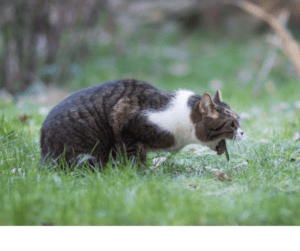What is Quarantine?
When you hear the word “quarantine”, you may think about the plague and yellow caution tape. However, quarantine can actually help your pet and other animals from getting sick, and it is actually a lot less scary than it seems! Quarantine is a strategy used to limit the exposure of illness to healthy animals by keeping sick and potentially infected animals in a separate space for a period of time. After the determined period of time is over, the sick animals will be re-introduced back with other animals.
Who Gets Quarantined?
This is a tricky question, as oftentimes animals can appear clinically healthy, however, many have been exposed to an infectious disease. Animals that have been exposed to or are suspected of being exposed to deadly viruses and disease should be quarantined from other animals to prevent the spread of disease. Whether you own a shelter or are a dog or cat owner, if you suspect an animal has been exposed to a deadly disease, you should err on the cautious side and quarantine that animal.
When and How Long Should An Animal Be Quarantined?
The length of time that an animal should be quarantined varies depending on the disease, where the animal is located, and if the disease is transmittable to humans. A dog or cat can be quarantined for up to six months based upon disease. Many diseases like Canine Distemper incubate for weeks and months and require longer quarantine periods.
 If a cat has the Distemper virus, the cat may shed the virus before any clinical signs are visible, during incubation, and up to six weeks after recovery. Cats should be quarantined for up to six weeks if they are displaying any unusual symptoms such as vomiting, diarrhea, anorexia, or blood in the stool to protect other animals. Dogs with Distemper should be quarantined for at least 30 days, but up to 4 months.
If a cat has the Distemper virus, the cat may shed the virus before any clinical signs are visible, during incubation, and up to six weeks after recovery. Cats should be quarantined for up to six weeks if they are displaying any unusual symptoms such as vomiting, diarrhea, anorexia, or blood in the stool to protect other animals. Dogs with Distemper should be quarantined for at least 30 days, but up to 4 months.
A shelter may need to quarantine new animals that are brought into the shelter and those that have been recently exposed to a disease. The quarantine period allows for a shelter to identify which animals will develop clinical symptoms and need treatment, and which animals are healthy. Recommended quarantine periods in shelters are based on the longest incubation period.
Where are Animals Quarantined?
Depending on the severity of the illness and a case-by-case evaluation, your vet may order you to keep your dog or cat indoors, or on a leash in your own yard. In severe cases, your pet may need to be quarantined at a state-approved animal control facility that is run with automatic doors and swivels for food and water to avoid all contact.
Animals that are quarantined are not allowed to go to dog parks, doggie daycare, or other public spaces where other animals can go. Some vets will not allow quarantined animals in the waiting room at the veterinarian office, so check with your pet’s doctor.
At home, limit your dog or cat to certain rooms of your house to decrease your other pets from getting sick. Do not let multiple animals share food and water bowls, toys, or bedding. Do not let your pets interact with each other, and let dogs outside to go to the bathroom at separate times.
Why are Animals Quarantined?
Dogs and cats may be quarantined for several reasons, but the main reason is to prevent an infectious disease outbreak. Listen to your vet when it comes to deciding whether or not to quarantine an animal! Some diseases are very deadly and quarantine can be a matter of life and death. Additionally, some diseases can be transmitted to people, so it is very important to follow the protocol and instructions given to you.
6 Helpful Tips
1. Dedicate a sink near the quarantined animal for hand washing.
2. Make sure the room you choose to keep a sick animal has appropriate lighting.
3. Choose a room that has materials and surfaces that are easy to clean and disinfect.
4. Make sure a sick animal is completely separated from other animals and their living spaces.
5. Offer items to the quarantined animal to reduce stress such as blankets and toys, dedicated solely to that animal. Do not share items between healthy and sick animals.
6. Put up clear signage to indicate where infectious animals are currently staying.






